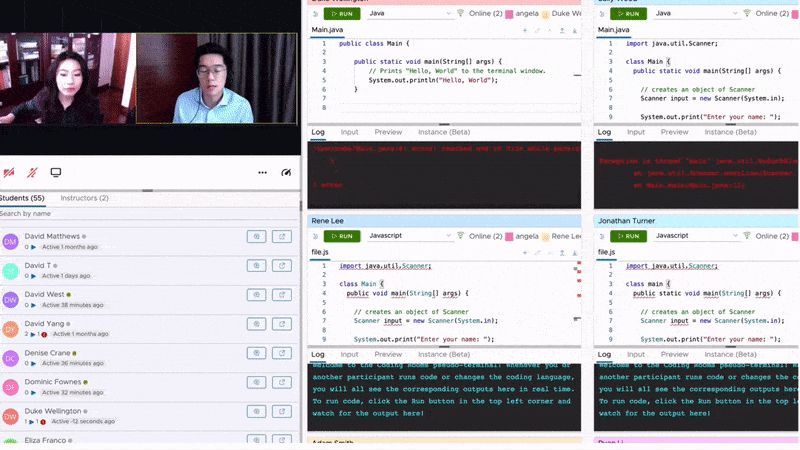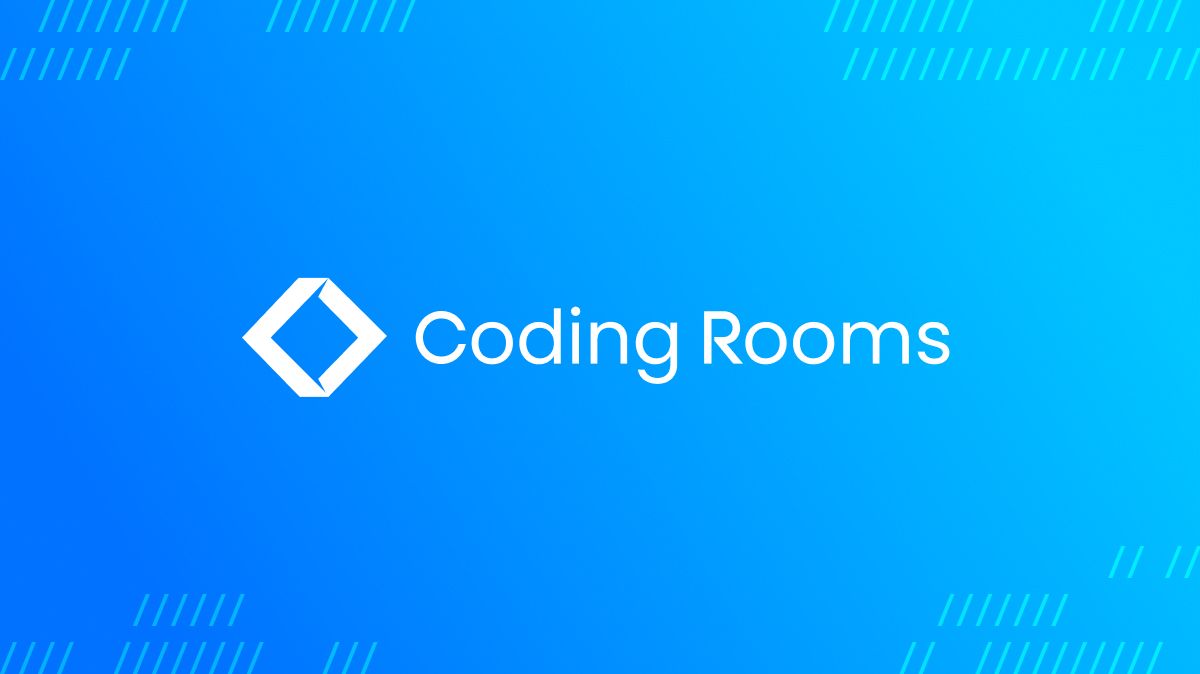Coding Rooms is an online platform for teaching programming that’s used by educators at high schools, universities, and businesses around the world. The platform provides teachers with a dashboard view of students’ work, letting them access students’ code in real time. Teachers can teach remote classes and chat one-on-one with remote students via an embedded video call.
Speed and efficiency are mission critical for the platform and its users. “If a teacher loses five to ten minutes of a class, it's disastrous,” Sasha Varlamov CEO and cofounder of Coding Rooms explains. Since many computer science classes are only 45-minutes long, five to ten minutes can make all the difference to a student’s learning, especially when code samples are more challenging or involved.
“From a technical perspective one of the biggest things we actually dealt with was getting video to work.”
Sasha Varlamov, CEO and cofounder, Coding Rooms
The immediacy afforded by the platform helps teachers be present and respond more easily to student needs. Coding Rooms is powering “a new pedagogy, in a sense. Where the teacher can help lots of people at the same time.”
Reliable video is key: “If teachers have to spend time trying to figure out why people can't connect, they're not going to use our platform. It's a show stopper for us."
However, the first video platform that Coding Rooms integrated was unreliable, costing them time and customers. “Every day we'd go in and there would be a list of support tickets. 80% of them would be complaints that video didn’t work."
An education platform that’s custom built for task
The idea for Coding Rooms developed out of Varlamov’s own experience as a high school student in computer class, witnessing teachers’ frustrations first hand. “You don't really know what everyone is doing. Teaching a large group of people computer science can feel like screaming into the void.”
The beginning of a computer science class is a particularly involved process, with a longer set-up process than most classes, as students load their machines and teachers try to rally students around the same example code.

“The more time you can save right at the beginning of a lesson is really crucial,” Varlamov explains. “That’s one problem we solve for.”
Coding Rooms’ platform also allows teachers to guide students through material more precisely, resulting in better learning outcomes. “When we speak to students, the main point of feedback we get, the main reason they like using Coding Rooms: it’s a lot easier to follow lessons.”
When Varlamov and his cofounders, Karim Marrouche and Stan Varlamov, began building Coding Rooms, they integrated an open-source video platform built specifically for education. The implementation was lengthy and involved setting up a server, but the platform was well-known in the educational space and seemed like the trusted choice.
The platform quickly proved unreliable in terms of call quality. Certain features, like sharing PDFs, did not work as they were supposed to. What’s more, the only way of troubleshooting video call issues was to query XML event files.
“It's not something you could give to a support person,” Varlamov explains, talking about the troubleshooting process. “We were kind of at the point where we thought, if the call quality is just bad, we're not going to have video.”
The process of replacing their video API
In need of a new provider, Coding Rooms evaluated several major platforms and ran a test with another open-source platform. “It had a really bad performance. People's CPU fans would just spin up like crazy.” Call quality was completely unreliable."
Coding Rooms decided to test Daily after learning that Y Combinator’s Startup School powers its classes with Daily. The team emailed a dozen users who they’d identified as early adopters to try it out. The response was unanimous approval.
Coding Rooms decided to make Daily their default video call integration, based on user feedback. “I think we rolled that out overnight."
“I always recommend Daily, especially to other companies in the education space”
Sasha Varlamov, CEO and cofounder, Coding Rooms
The process took about a day of work. “We ended up having to write a certain amount of logic to instantiate Daily meetings and figure out which is the active Daily meeting for a given classroom at any point in time,” Varlamov explains. This relates to the way video rooms are set up in Coding Rooms. “A live classroom can be opened basically forever. Students and teachers can come in at any time. It's always there.“
The team was able to repurpose logic they’d already written for this task. “To this day, everything is pretty much the same in terms of rotating the meetings. On the front end, it was just a matter of including the Daily JS file. The front end was pretty easy in terms of just getting it loaded up.”
Coding Rooms kept their legacy video conferencing integration as an option, buried deep in advanced settings, to support teachers who did not want to switch to a new platform mid semester.
“We had a handful of teachers who had already planned their lessons,” Varlamov explains. “It’s partially because of the industry we're in. Teachers don't like change.”
Peace of mind and business growth
When Coding Rooms switched to Daily, their support tickets went down 80% practically overnight. This has freed up time and resources to grow their business — and given the team new peace of mind.
“Having a reputable provider makes it easier for us,” Varlamov explains. “If things don't work then — first of all, it doesn't happen nearly as often. But a lot of the time we're comfortable saying to people that the problem is most likely on their end. And of course we'll work with them to try and figure out what that issue is, but it's an order of magnitude easier for us.”
"Having a reputable provider makes it easier for us."
Sasha Varlamov, CEO and cofounder, Coding Rooms
Daily’s dashboard reporting and data visualizations have made it faster and easier to respond to remaining customer support queries. Coding Rooms often receives questions from teachers regarding student absences. These support tickets “basically just turned into checking Daily logs, seeing whether a student could connect,” Varlamov explains. “Being able to see detailed call logs is just so useful.”
When more complex issues do occur, Coding Rooms have been able to rely on Daily’s customer support to help. “You guys have been really good in terms of helping us optimize end-user performance on the students’ side. A lot of our users are on Chromebooks, so it's probably really close to minimum requirements for a lot of things.”
Delivering reliable video calling has had a knock-on effect on customer retention. “People who said they wouldn't use our product because of bad conferencing came back and subscribed.”
“From developer experience to call stability, there is no system that even comes close to Daily.”

